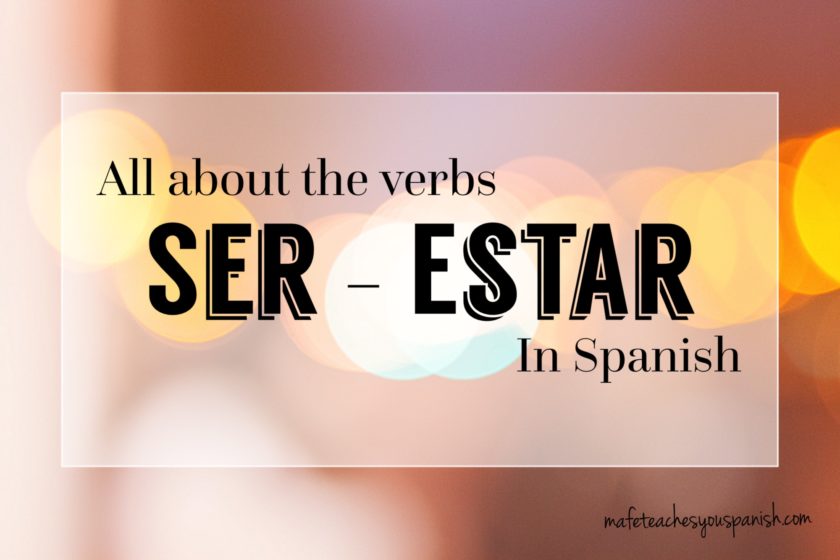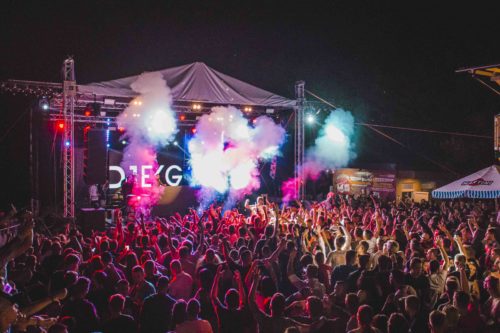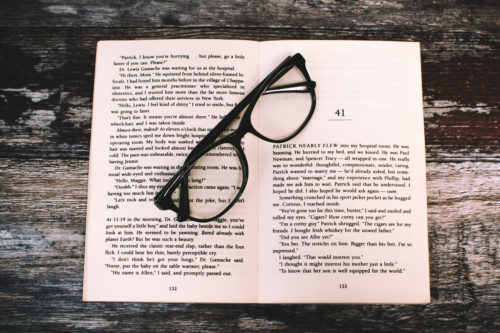
Ser and Estar (To be)
Learning the uses of the verbs Ser and Estar can seem difficult at the beginning because they are just one verb in most languages (Verb to be in English). But if you dedicate a little bit of extra time to these 2 verbs and learn their uses, conjugations, and differences, then you will be fine. Plus, you will see them EVERYWHERE in Spanish, so even if you can’t nail them from the beginning, you will just get used to their uses, by seeing them all the time.
Conjugation verb SER
| TO BE | PRONOUN | SER | ESTAR |
|---|---|---|---|
| (I am) | Yo | soy | estoy |
| (You are) | Tú | eres | estás |
| (He - she is) | Él - ella | es | está |
| (We are ) | Nosotros | somos | estamos |
| (You are -pl) | Ustedes | son | están |
| (They are) | Ellos - ellas | son | están |
Uses of verb SER
We use SER to describe people or things as they are. We use it when we talk about what defines a person. Things that can’t be easily changed. Things that belong to the nature and personality of the person. In one word, conditions that are permanent.
—
1. Talking about the subject’s identity
Their physical description, personality, nationality, race, gender, profession, etc. All these things are part of one’s nature and are permanent conditions that can’t be changed. So we use the verb SER
We use it to say things like: I am tall, she is Colombian, they are smart, we are students, he is fun etc…
- Yo soy mujer (I am a woman)
- Tú eres colombiano (You are Colombian)
- Él es estudiante (He is a student)
- Ella es ingeniera (She is an Engineer)
- Usted es honesto (You are honest)
- Nosotros somos italianos (We are Italian)
- Ustedes son inteligentes (You guys are smart)
- Ellas son altas (They are tall)
- Ellos son divertidos (They are fun)

2. What things are made of
Because it’s also the nature of the subject, it can’t be changed.
- El anillo es de plata (The ring is made of silver)
- La mesa es de madera (The table is made of wood)
- El vaso es de vidrio (The glass is made of glass)
- La hoja es de papel (The sheet is made of paper)
- La silla es de plastico (The chair is made of plastic)

3. Events or moments in time:
Dates, days, seasons, time, events, concerts, parties
- El concierto es mañana (The concert is tomorrow)
- La cita es el domingo (The appointment is on Sunday)
- La reunión es el 14 de enero (The meeting is on January 14th)
- Mi cumpleaños es en abril (My birthday is in April)

4. Relationships and family
- Ella es mi hermana (She is my sister)
- Él es mi primo (he is my cousin)
- Nosotros somos amigos (We are friends)
- Ellas son mis vecinas (They are my neighbors)
- Ellos son mis padres (They are my parents)

Uses of verb ESTAR
We use Estar for things that are NOT permanent. That means, for what is temporary and can be easily changed. Something that is being at the moment. We also use it to talk about the current location of something or someone.
1. Mood, Emotions, Physical State, Feelings:
Feelings/moods/emotions, physical conditions or appearances. All these things are temporary and don’t define the nature of the subject.
- Yo estoy enfermo (I am sick)
- Tu estás feliz (You are happy)
- Usted está triste (You are sad)
- Ella está preocupada (She is worried)
- Él está enojado (He is angry)
- Nosotros estamos cansados (We are tired)
- Ustedes están equivocados (You guys are wrong)
- Ellas están aburridas (They are bored)
- Ellos están sorprendidos (They are surprised)

2. Location of people or things
To say where someone or something is located at the moment, (not events) but NOT to say where they are from.
- El libro está en la mesa (The book is on the table)
- Marta está en Perú (Marta is in Peru)
- Yo estoy en Argentina (I am in Argentina)
- Nosotros estamos en México (We are in Mexico)
- El perro está en la sala (the dog is in the living room)
- La llave está en mi bolso (The key is in my purse)
- El carro está en la calle (The car is on the street)

SUMMARY
SER Is used for permanent conditions and descriptions
ESTAR is used for temporary conditions and locations
Take a lesson about the verbs SER and ESTAR
Having trouble understanding the uses of these verbs? Would you like to practice them in real life?
Send me a message to book a lesson now and I will help you to understand, practice and use these verbs and more.
PRACTICE
Ellos —–en la cocina de mi casa
Ustedes ——muy amables conmigo
Ellas —– intelligentes y agradables
Él —–en una reunión de trabajo
Nosotros —– amigos desde pequeños
Tú —– en mi casa
Ella —–en el cine con Maria
Ellas —–en la tienda de ropa
Tú —– en el parque con los niños
Él —– muy fuerte
Tú —– en la escuela
Él —–en la clase de español
Ellos —– los padres de mi novia
Ustedes ——en la biblioteca